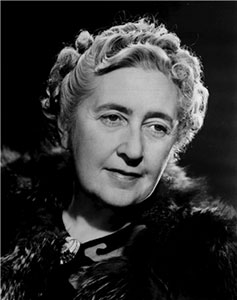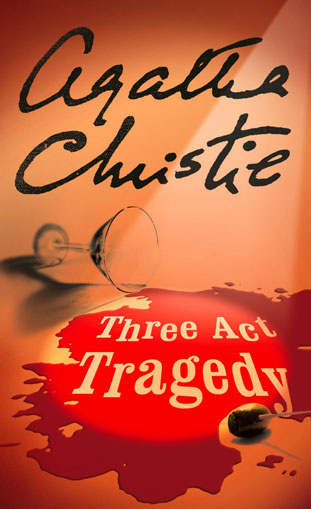Three-Act Tragedy, Agatha Christie
Published in 1935, Three-Act Tragedy proves that even literary giants sometimes have their vulnerable moments and can leave you hungry for more. Unfortunately, this book suffers from too little of Hercule Poirot's deductive skills and a cast of too many stereotypical and eccentric characters trying to solve the mystery themselves.
The book should also be a reminder to never host a party for 13. It's an unlucky omen for your guests, as well as for the event host. A dinner party is hosted by actor, Sir Charles Cartwright. Cocktails are served and before the group can chime, "Bottom's up!", one of tne guests, a soft-spoken minister, is dead. Did he choke on his martini olive or is there something more sinister lurking behind the tray of appetizers? Sir Charles immediately suspects that this was not a natural death and wonders which one of his other guests might be a killer? Certainly one could not suspect Lady Lytton Gore or her daughter, Hermione, nicknamed 'Egg'? Sir Charles' attention then turns to his former lover and fellow thespian, Angela Sutcliffe. Or could the dressmaker, Cynthia Dacres or her husband be the killer? The list of possible criminals rapidly becomes a menu of murderers!
In an unusual bit of plot development, Christie includes two of her detectives in the story. Hercule Poirot, the famous Belgian detective and Mr. Satterthwaite are both guests at the Ritz Hotel. Mr. Satterthwaite made a previous appearance in Christie's, "The Mysterious Mr. Quinn". It will be Poirot, of course, who quickly looks beyond the stage that was set for murder. His keen eye will clearly see, without the glare and deception of footlights, props and costumed characters, who has a heart for murder at the dinner table. Before the crime is solved, however, there are more murders and tragedy will continue.
The book proves to be somewhat unsatisfactory as it fails to let the reader in on Poirot's important deductions. Readers are justifiably frustrated when certain clues are kept back and they are, as a result, kept in the dark. When the murder is solved, readers want to know that they have been given a fair chance to solve the case on a level playing field.
In Three-Act Tragedy, so much attention is focused on Sir Charles' and Egg Lytton Gore's efforts to solve the case, that the true detective's observations are not revealed until the end of the book. While certainly not the most satisfying Poirot mystery, it is still worth reading. The story was also the inspiration for a 1985 film starring the rotund Peter Ustinov as Poirot, but for some unexplained reason, the setting was changed from England to Acapulco. When you read this mystery, please remember, all the world's a stage...and with this many suspects around... you better watch your back!
Read our biography of Agatha Christie.










